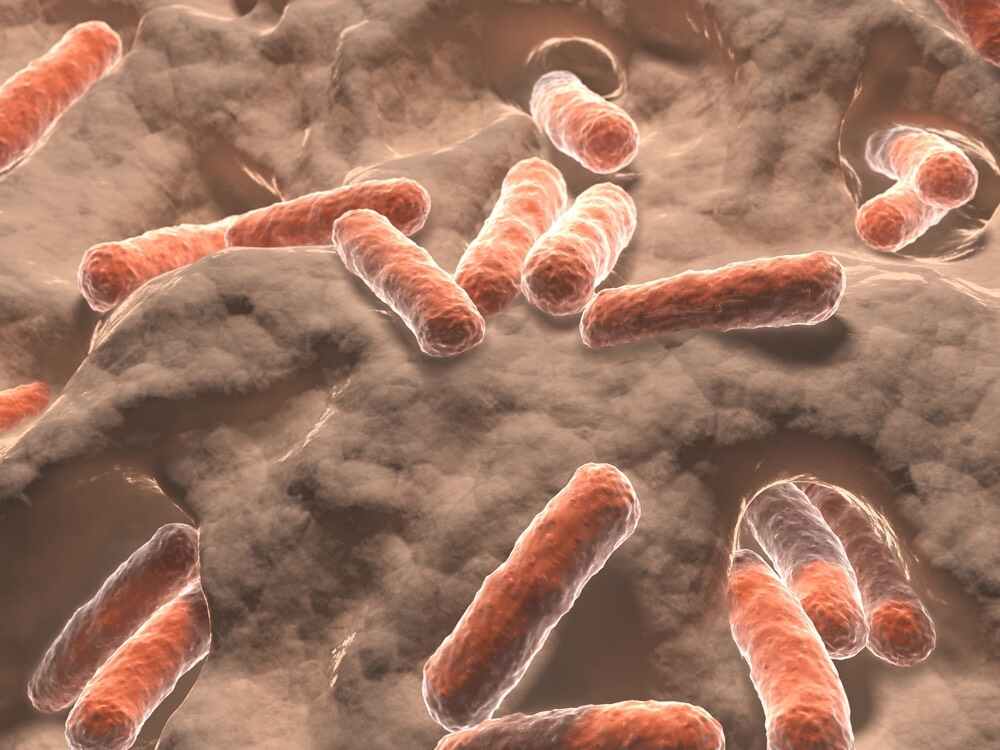Gut Microbes Could Lead Fight Against Superbugs


John Kokai-Kun is vice president of nonclinical affairs at Synthetic Biologics. Kokai-Kun is a microbiologist by training, with more than 17 years of experience in developing drugs. Synthetic Biologics is aclinical-stage company developing therapeutics aimed at protecting the gut microbiome while targeting specific diseases. Kokai-Kun contributed this article to Live Science's Expert Voices: Op-Ed & Insights.
Microorganisms live and thrive throughout your body, and as strange as it may sound, scientists have found that these microbes are vital to your health.
These microbes live on the surface of your skin, in between your toes and on your scalp. They make their homes in your nasal passages, in between your teeth and in your gastrointestinal (GI) tract. This is the human microbiome, and it is a collection of billions of microorganisms that live together in harmony on and inside people's bodies. The naked eye cannot see these microorganisms, but they are there.
At this point, you're probably asking yourself, "What exactly is it these microbes do, and how can I get rid of them?" But these bugs may actually be some of your greatest allies for staying healthy, and rather than trying to get rid of them, you should try to maintain their balance in order to remain in good health. [Body Bugs: 5 Surprising Facts About Your Microbiome]
We need each other
The microorganisms within your microbiome rely on each other, and you, for survival. In other words, they exist in a symbiotic relationship — one that is mutually beneficial to the microorganisms and their human host.
The microbiome helps to protect people against illness by strengthening the human immune system, priming it to identify harmful pathogens. The microorganisms also form a protective community that can prevent other, more dangerous microorganisms from getting a toehold and causing infections. The microorganisms in the GI tract (or the gut microbiome) are vital to the breakdown of food for the absorption of nutrients during digestion.
Recently, research has shown that this symbiotic relationship may be more closely linked to human health than medical professionals originally realized.
Get the world’s most fascinating discoveries delivered straight to your inbox.
For example, it was once thought that fetuses in their mother's womb were in a nearly sterile environment, free from exposure to most germs and bacteria. But recent research has shown that in this environment, people have their first interactions with beneficial microorganisms. And, during vaginal childbirth, mothers transfer 40 or 50 microbial species to their children, which are important for the digestion of the mother's milk. These same beneficial microbes begin colonizing a baby's body surfaces and GI tract almost immediately. [5 Ways Gut Bacteria Affect Your Health]
As people grow and age, the composition of their microbiome changes, too. Environmental factors such as genetics, diet, climate, geography, smoking, medications and exposure to family, friends and pets all play a role in shaping the composition of the microbiome.
Smoking has long been associated with contributing to worsening health, and has also been shown to change the microbiome of people's mouths, according to research conducted at New York University. In that research, more than 150 bacterial species showed significantly increased growth in the mouths of smokers, while another 70 species showed sharp decreases in growth.
Studies have also shown that microbial communities on adult skin are more similar to those of one's own dogs when compared to the microbiomes of other dogs, and cohabiting couples who have dogs tend to share more microbes with one another compared to couples who don't have dogs.
According to research published in 2014 in Nature Communications, changes in a person's weight and aging can also affect the microbiome.
A precarious balance
Although individual gut microbiomes are fairly stable over time, certain microbes may come and go, and some disappear, never to return. A healthy, balanced microbiome is associated with better overall health, whereas an imbalanced microbiome may contribute to diseases ranging from infections to various metabolic illnesses, and perhaps even cancers.
Recent clinical data from our own studies suggest that the absence or abundance of certain microbes may be directly linked to certain diseases and infections, including irritable bowel syndrome (IBS) and Clostridium difficile infections (CDI).
For instance, people can be exposed to C. difficile bacteria, but the presence of a healthy and well-balanced gut microbiome can protect them from the threat of infection by blocking colonization. This is because the diverse microbes in a healthy gut microbiome act as a system of checks and balances, allowing the ecosystem of microorganisms to remain relatively steady. When species of microorganisms are eliminated or sharply reduced in the gut, the ecosystem is disrupted and may allow overpopulation by opportunistic bacteria, such as C. difficile, which may develop into a more serious C. difficile infection. This can lead to severe diarrhea, damage to the colon and, in some cases, even death.
Such imbalances can occur in a variety of ways. For example, drastic environmental changes, like changes in diet or smoking habits, have the potential to alter the natural balance of the gut microbiome. Recent clinical evidence from a study at the Minneapolis Veterans Affairs Health Care System suggests exposure to antibiotics is serious threat to the gut microbiome, a finding that may forever alter the current treatment paradigm for combatting common bacterial infections.
Antibiotics: A double-edged sword
Since the beginning of the 20th century, the proliferation of antimicrobial agents, or antibiotics, to treat bacterial infections has saved countless lives across the globe. [Aspirin to Zoloft: The Scoop on 5 Medicines]
Typically, antibiotics either destroy harmful bacteria or inhibit their growth enough to allow the body's immune system to fight and destroy remaining pathogens. One way antibiotics attack bacteria is by inhibiting certain enzymes that the bacteria need in order to grow. This is the case for penicillin and cephalosporins, which block cell wall synthesis, and for azithromycin, which blocks protein synthesis by bacteria. Other antibiotics, like polymyxin B, can directly disrupt the bacterial membrane by poking holes in it.
Antimicrobials are very effective. And they have been instrumental to the control of infectious diseases that were the leading causes of death for most of human existence, in the pre-antibiotic era. However, antibiotics can also unintentionally eliminate the "good" bacteria in a person's body, such as those in the gut microbiome.
Antibiotic assault on the gut
Antibiotics are typically administered either orally or intravenously (IV) to treat bacterial infections. Each year in the United States, nearly 24 million patients receive some form of IV antibiotic, usually during hospital stays and often as a precautionary or preventative measure. And although these antibiotics can treat or prevent some bacterial infections, they can also have a devastating impact on the balance of the gut microbiome.
IV antibiotics, such as the commonly used antibiotic ceftriaxone, are administered systemically to fight primary bacterial infections like pneumonia. The body disposes of residual IV antibiotics by carrying them through the liver for transport in the bile. Eventually, the body excretes these still-functional antibiotics via the large intestine. But this may unintentionally upset the body's natural balance by killing off good bacteria.
An imbalance in the gut microbiome caused by antibiotics provides an opportunity for the overgrowth of harmful pathogenic organisms that a healthy, balanced gut microbiome would otherwise suppress.
According to the Centers for Disease Control and Prevention (CDC), CDI has become the most common hospital-acquired infection in this country, surpassing Methicillin-resistant Staphylococcus aureus (MRSA) with more than 450,000 cases, and 29,000 C. difficile-related deaths, now occurring annually in the United States.
Overexposure and the failure of antibiotics
Antibiotics can also lead to the development of antibiotic resistance in the bacteria living in the human gut.
Recent statements from the World Health Organization (WHO) and CDC support the position that continued exposure, overuse and misuse of antibiotics are contributing to the development and proliferation of antibiotic resistance in many types of bacteria.
Clinical research shows that resistant strains of microorganisms can transfer antibiotic resistance to other microbial species. Bits of DNA carrying genes that confer antibiotic resistance for one bacteria can be transferred to other bacteria through several mechanisms, including direct transfer of extracellular DNA fragments from one bacterium to another (transformation), packaging of DNA in a bacteria phage, a kind of virus that attacks bacteria, that goes on to infect another bacteria (transduction) or transfer of DNA fragments through a bridge-like mating connection (conjugation). This transfer makes the receiving bacteria resistant to the antibiotic, as well.
Government and industry leaders have expressed overwhelming concern that the proliferation of antibiotic resistance genes among microorganisms could bring society back to a pre-antibiotic era, in which bacterial infections can no longer be treated with antibiotics.
In January 2016, global leaders congregated at the World Economic Forum in Davos, Switzerland, to discuss the organization's mission to improve the state of the world.
In conjunction with leaders of participating governments, leaders of the diagnostic and pharmaceutical industries signed the "Declaration on Combating Antimicrobial Resistance" to address the growing need to develop new and innovative approaches to fight the spread of drug-resistant microorganisms.
One strategic approach aims to protect the gut microbiome from antibiotics by degrading those antibiotics excreted into the GI tract before they can disrupt the gut microbiome. In our recent clinical trials, we showed that certain IV antibiotics were successfully degraded in the GI tract, prior to exposing the gut microbiome to the drugs' harmful effects. Evidence from these trials further indicates that this approach did not affect the amount of the IV antibiotic in the bloodstream necessary to fight primary infections.
As our understanding grows of the essential balance between humans and their microbiomes, and of the role of these microbiomes in human health, efforts to maintain the balance of this essential community to prevent and treat diseases will continue. Protecting this community against unneeded antibiotic exposure will have the added benefit of reducing the selective pressure that leads to antibiotic resistance. We are on the verge of an exciting new era in which humans and their microbial companions stride boldly towards a healthier tomorrow.
Follow all of the Expert Voices issues and debates — and become part of the discussion — on Facebook, Twitterand Google+. The views expressed are those of the author and do not necessarily reflect the views of the publisher. This version of the article was originally published on LiveScience.com.


